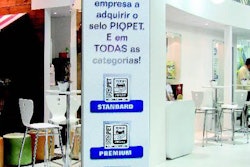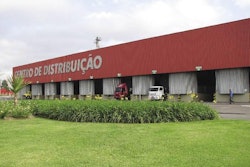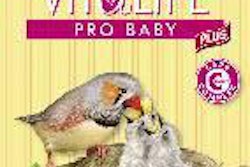In 2008 the petfood market is rebounding, following sluggish sales that came on the heels of the petfood recalls of early 2007. Mintel expects US sales of dog and cat foods to reach US$16.9 billion in 2008.
Petfood marketers have been quick to position new brands and line extensions with wholesome, healthy and natural claims. The greatest sales success for major petfood marketers has come from growth in specialized, natural and indulgent products.
Leading brands
Nestlé Purina is the dominant US mass market player with a 38.8% share of the 2008 FDMx market (food, drug and mass merchandisers excluding Wal-Mart). The company has a wide range of brands, and sales have increased.
Successful dog food launches, such as Iams Healthy Naturals, have helped Iams emerge from the recall rubble, yet overall sales growth was slowed by a lack of a similar successful launch in cat food.
Mars sales were primarily buoyed by the popularity of the Goodlife Recipe in both dog and cat varieties.
Key consumer findings
Dogs continue to be the most commonly owned pets, followed by cats, yet there are more multiple-cat households. Little difference is seen between the genders for cat ownership. The likelihood of having pets in general increases with household income.
For US pet owners, pet dental care is a top-rated concern that suggests adding teeth cleaning attributes to a petfood will boost its popularity. Belief that organic petfood is of higher quality is significant, yet the majority of respondents (77%) are not willing to pay a premium.
Growth in natural products
According to Mintel's global new product database (GNPD), the number of new petfood introductions with an "all natural" claim grew 29% from July 2007 to July 2008 and the "organic" claim for pet supplies grew a staggering 567% for the same period.
Products such as the Goodlife Recipe (both cat and dog), Iams Healthy Naturals dog food and Purina Cat Chow Naturals realized some of the greatest sales successes through the FDMx channels.
Additionally, petfood sales growth through natural store channels has exceeded that of the overall market. These sales largely reflect a general consumer interest in natural products over a variety of markets, as well as consumers "trading up" as a result of the petfood recalls.
While a number of the larger players have introduced products that meet this growing consumer demand, there is ample room for others to grow in this arena, according to Mintel. An "all natural" label is easier to attain than an organic label, yet it is still attractive in the eyes of shoppers looking for assurance that the petfoods they purchase for their pets are a healthier alternative.
Functional petfoods
The freshman generation of functional products has included food geared to specific needs, primarily weight control, yet the market is now ready to receive an influx of products that go a step beyond and treat a wider variety of concerns. Human food and beverages have experienced growth through functional products, and zealous pet owners have enabled functional claims to cross over to pet products as well.
A large number of dogs, particularly older ones, have joint issues, and glucosamine and chondroitin sulfate are popular treatments. Incorporating these into petfood accompanied by a bold marketing message is a recipe for success, notes Mintel.
Even products with added extras that are more beneficial to humans than pets are flourishing. Consider Kibbles n' Bits Brushing Bites dog food, which boasts: "Cleans teeth and freshens breath for sweet-smelling kisses." The product saw 30% year-over-year growth in April 2008 over 2007.
With so many conditions and ailments affecting our pets, the world is full of possibilities for functionally enhanced products. As natural ingredients continue to grow in popularity, plant derivatives are a way to supplement without the concern of overmedication.
Origin of ingredients
Some pet owners now scrutinize packaging to make sure the products were manufactured in the US, with US ingredients. Because wheat gluten was at the core of the petfood recalls, "gluten-free" product claims increased 609% from June 2007 to June 2008 according to Mintel's GNPD. Shifting the source of ingredients and manufacturing location can be a costly endeavor, but it may become increasingly necessary in order to retain customers.
Eco-friendly
The world is going green, and eco-conscious consumers are seeking out many avenues that will reduce the collective carbon footprint. For this market, the trend can infiltrate at all levels, from petfood that is made from organic and natural ingredients to humanely raised animal meat.
The proliferation of petfoods aimed at different lifestages, sizes and breeds, as well as products for particular conditions, continues to change the US petfood market. Lately the greatest sales growth has been seen for products positioned as natural.l


.png?auto=format%2Ccompress&fit=crop&h=167&q=70&w=250)












